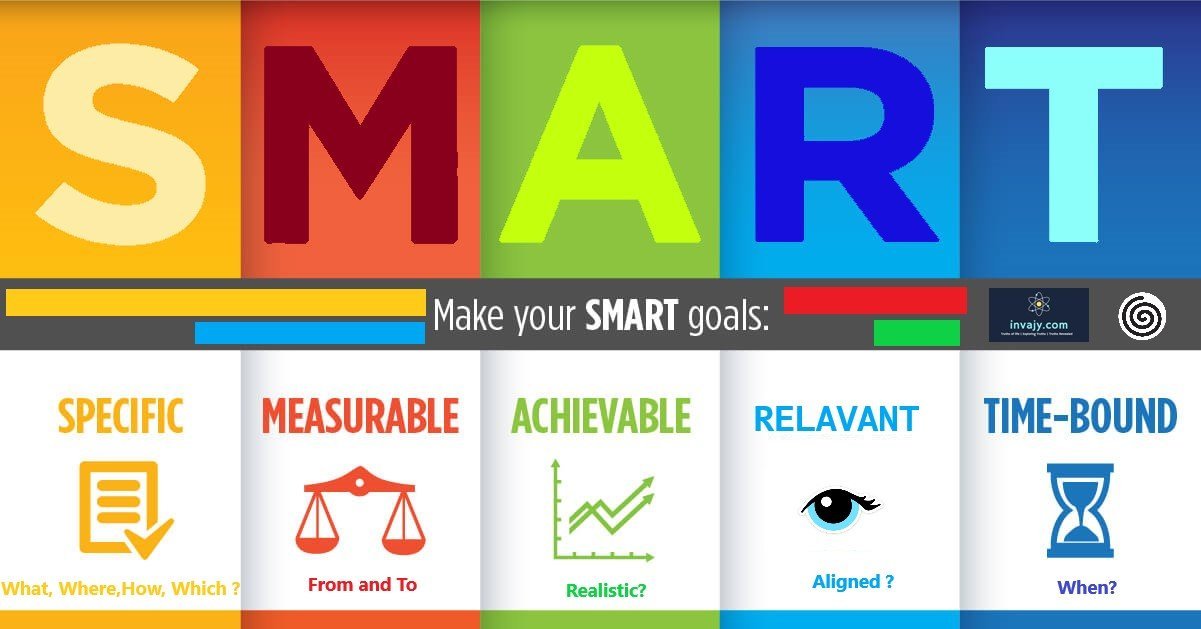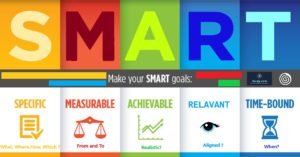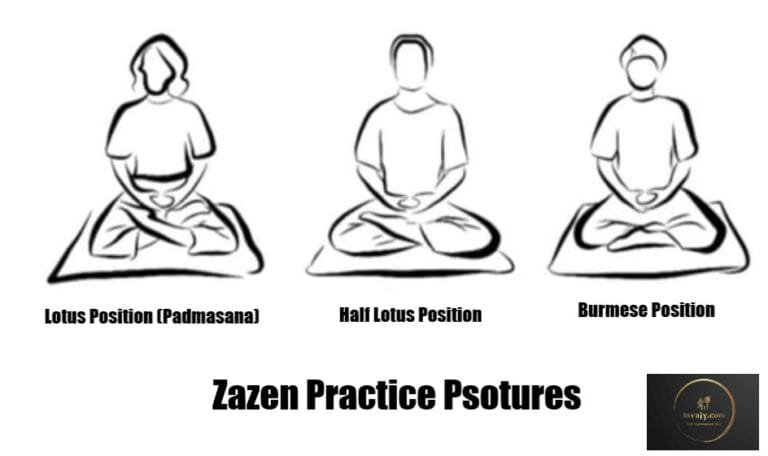12 SMART Goal Examples (& How To Achieve Them)
Ready to turn your dreams into reality? SMART Goal Examples that will show you how to set clear, attainable objectives and turn them into tangible results. Get inspired, get motivated, and start making your goals happen today!

Goal-setting is a fundamental part of personal and professional growth. However, not all goals are created equal. Creating SMART goals is a simple, well-known life hack for completing your tasks. This approach increases your chances of success by making goals clearer and easier to track progress. Looking for some SMART goal examples? Perhaps a step-by-step breakdown of the SMART framework?
What are SMART Goals?
A goal is something desired yet often challenging to attain. And just adding (and adhering to) the SMART acronym makes it much more achievable. Here the SMART stands for:
- Specific: Clearly define what you want to accomplish. An effective goal should be ultra-specific, leaving no room for misinterpretation or vagueness.
- Measurable: Your goal should be quantifiable and have criteria to measure the progress, so you know when you achieve milestones or the finish line.
- Achievable: Ensure the goal is realistic and attainable.
- Relevant: Does the goal you’re setting contribute to your bigger overarching goals? Ensure you’re setting a relevant goal that contributes to what you want in life. Align the goal with your values and long-term objectives.
- Time-bound: Set a deadline to create urgency and focus. SMART goal has defined start and end times and, if large enough, have incremental dates to meet specific objectives.

Here are real SMART goal examples across various areas of life, along with strategies to achieve them:
Career Goal
Simple Goal : “I want to Increase my sales.”
SMART Goal : “I will increase my annual sales by 20% within the next 12 months.”
SMART Goal Components
- Specific: The goal specifies exactly what is to be achieved – a 20% increase in annual sales.
- Measurable: Progress can be measured quantitatively by comparing current sales figures with the target increase.
- Achievable: While ambitious, a 20% increase is realistic with proper planning and execution of sales strategies.
- Relevant: It directly impacts career growth and aligns with professional objectives.
- Time-bound: The goal has a clear deadline of 12 months to create urgency and focus efforts.
How to Achieve It
- Break down the goal into monthly targets.
- Implement new sales strategies or improve existing ones.
- Track progress using sales reports and adjust strategies accordingly.
Academic Goal
Simple Goal : “I need to study more.”
SMART Goal : “I will achieve a GPA of 3.8 or higher this semester.”
SMART Goal Components
- Specific: The goal clearly states the target GPA for the semester.
- Measurable: GPA is a numeric measure.
- Achievable: A GPA of 3.8 is challenging but realistic with dedicated study and academic focus.
- Relevant: It directly relates to academic success and personal development.
- Time-bound: Limited to the current semester, providing a specific timeframe for achievement.
How to Achieve It
- Create a study schedule and allocate specific time for each subject.
- Seek help from tutors or study groups if needed.
- Regularly review class notes and prepare thoroughly for exams.
Fitness Goal
Simple Goal : “I want to run a marathon.”
SMART Goal : “I will run a marathon in under 4 hours by next June.”
- Specific: Running a marathon in a specific time frame (under 4 hours) is clearly defined.
- Measurable: Race results will clearly indicate if the goal has been achieved.
- Achievable: With a structured training plan and gradual progression, it is feasible for many runners.
- Relevant: It aligns with fitness and personal achievement goals.
- Time-bound: The deadline is set for next June, providing a clear timeframe for preparation and training.
How to Achieve It
- Follow a structured marathon training plan.
- Gradually increase mileage and incorporate speed work.
- Monitor progress with a running log and adjust training as necessary.
Financial Goal

Simple Goal: “I will save more money.”
SMART Goal: “I will save $10,000 for a down payment on a house within two years.”
- Specific: The goal specifies the exact amount ($10,000) and purpose (down payment).
- Measurable: Savings progress can be tracked against the $10,000 target.
- Achievable: Saving $10,000 in two years is realistic with disciplined financial planning.
- Relevant: It aligns with the long-term goal of homeownership.
- Time-bound: The deadline of two years sets a timeframe for achieving the savings goal.
How to Achieve It
- Create a budget to track income and expenses.
- Identify areas where you can cut costs and increase savings.
- Consider additional income sources or investments to accelerate savings.
Personal Development Goal

Simple Goal: “I should read more books.”
SMART Goal: “I will read 24 books by the end of the year.”
- Specific: The goal states the number of books (24) and the timeframe (by the end of the year).
- Measurable: Progress can be tracked by counting the number of books read.
- Achievable: Reading two books per month is manageable for many avid readers.
- Relevant: It supports personal growth and intellectual enrichment.
- Time-bound: The deadline of the end of the year provides a clear timeframe for completion.
How to Achieve It
- Set aside dedicated time for reading each day or week.
- Create a list of books to read and prioritize them.
- Join a book club or online reading community for motivation and discussion.
Relationship Goal

Simple Goal: “On January 1st, I will start spending more time with my spouse.”
SMART Goal: “From January 1st, I will spend quality time with my partner at least twice a week.”
- Specific: The relationship goal specifies the frequency of spending quality time (at least twice a week).
- Measurable: Weekly or monthly reflection can track the consistency of quality time spent.
- Achievable: Scheduling two quality time sessions per week is realistic for most couples.
- Relevant: It strengthens the relationship and prioritizes quality time together.
- Time-bound: Ongoing but with a weekly measurement of progress.
How to Achieve It
- Schedule regular date nights or activities together.
- Communicate openly and actively listen to each other.
- Prioritize your relationship amidst other commitments.
Entrepreneurial Goal

Simple Goal : “I may launch a store.”
SMART Goal : “I will launch an online store and make the first sale within 3 months.”
SMART Goal Components
- Specific: The goal details both the launch of an online store and achieving the milestone of the first sale.
- Measurable: The first sale marks clear progress towards achieving the goal.
- Achievable: Launching an online store and making a sale within 3 months is feasible with proper planning and execution.
- Relevant: It supports entrepreneurial ambitions and business growth.
- Time-bound: The deadline of 3 months creates urgency and focus for launching and making the first sale.
How to Achieve It
- Research the market and identify a niche for your products.
- Build an e-commerce website or use a platform like Shopify.
- Promote your store through social media and online marketing channels.
Health Goal

Simple Goal: “I will lose some weight.”
SMART Goal: “I will lose 10 pounds in the next 3 months.”
- Specific: The goal specifies the amount of weight loss (10 pounds) and the timeframe (next 3 months).
- Measurable: Progress can be tracked through regular weigh-ins and measurements.
- Achievable: Losing 10 pounds in 3 months is realistic with a balanced diet and exercise regimen.
- Relevant: It promotes physical health and well-being.
- Time-bound: The deadline of 3 months provides a specific timeframe for achieving the weight loss goal.
How to Achieve It
- Set realistic dietary and exercise goals.
- Keep a food journal and track calorie intake.
- Incorporate strength training and cardio workouts into your routine.
Travel Goal

Simple Goal: “I shall travel more in future.”
SMART Goal: “I will visit 5 new countries in the next 2 years.”
- Specific: The goal specifies the number of new countries to visit (5) and the timeframe (next 2 years).
- Measurable: Progress can be tracked by counting the number of new countries visited.
- Achievable: Visiting 5 new countries in 2 years is realistic with proper travel planning and budgeting.
- Relevant: It supports exploration, cultural enrichment, and personal growth.
- Time-bound: The deadline of 2 years provides a timeframe for achieving the travel goal.
How to Achieve It
- Research destinations and create a travel itinerary.
- Save money specifically for travel expenses.
- Book flights and accommodations well in advance to save costs.
Skill Development Goal
Simple Goal: “I must learn a new language.”
SMART Goal: “I will become fluent in Spanish within 1 year.”
- Specific: The goal specifies the skill to be developed (fluency in Spanish) and the timeframe (within 1 year).
- Measurable: Fluency can be measured by language proficiency tests or conversational ability.
- Achievable: Achieving fluency in Spanish in 1 year is challenging but realistic with consistent practice and immersion.
- Relevant: It supports personal growth and cultural competence.
- Time-bound: The deadline of 1 year provides a specific timeframe for achieving fluency in Spanish.
How to Achieve It
- Enroll in a language course or find a language exchange partner.
- Practice speaking Spanish daily and immerse yourself in the language.
- Set benchmarks for progress such as passing language proficiency exams.
Community Involvement Goal
Simple Goal: “I will contribute more to the society.”
SMART Goal: “I will volunteer 100 hours at the local homeless shelter this year.”
- Specific: The goal specifies the number of volunteer hours (100) and the timeframe (this year).
- Measurable: Volunteer hours can be tracked and recorded throughout the year.
- Achievable: Volunteering 100 hours in a year is feasible with consistent participation.
- Relevant: It supports community well-being and personal fulfillment.
- Time-bound: The deadline of one year provides a timeframe for achieving the volunteer hour goal.
How to Achieve It
- Contact the shelter to inquire about volunteer opportunities.
- Schedule volunteer shifts around your other commitments.
- Reflect on your experiences and the impact of your contributions.
Creative Goal
Simple Goal: “I want to publish a novel.”
SMART Goal: “I will write a novel of at least 50,000 words in the next 6 months.”
- Specific: The goal specifies the creative project (writing a novel) and the minimum word count (50,000 words) within a timeframe (next 6 months).
- Measurable: Progress can be tracked by word count and milestones (e.g., completing chapters).
- Achievable: Writing a 50,000-word novel in 6 months is challenging but feasible with a structured writing schedule.
- Relevant: It supports creative expression and personal achievement.
- Time-bound: The deadline of 6 months provides a timeframe for completing the novel-writing goal.
How to Achieve It
- Develop a plot outline and create a writing schedule.
- Set daily or weekly word count goals to maintain momentum.
- Join a writing group or seek feedback from beta readers as you progress.
Setting SMART goals is a powerful strategy for turning aspirations into achievable objectives. By following the SMART criteria and implementing targeted action plans, you can significantly increase your likelihood of success in various areas of your life. Remember, the key to achieving any goal is consistency, adaptability, and a commitment to continuous improvement. Start setting your SMART goals today and watch your dreams become reality. The above SMART Goal Examples will help you to create your own goals.






